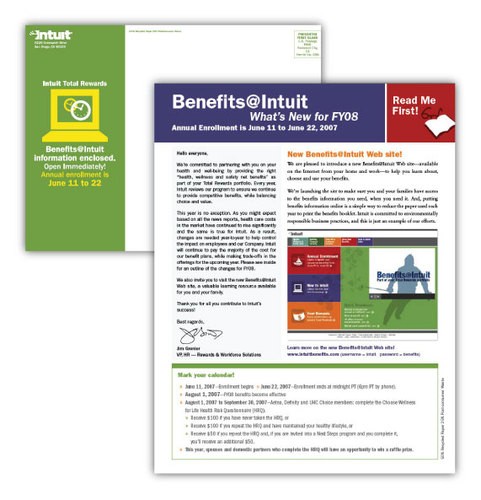How to campaign for a better 401(k) plan
Post on: 12 Июнь, 2015 No Comment

Contents
How to campaign for a better 401(k) plan
From an individual investor’s perspective 401(k) plans can be great, acceptable, or very poor. Poor plans are characterized by very high costs and lack of fund choices. If your plan does not have reasonable fees and lacks even a few low-cost index choices, then you may want to approach your company’s management with some suggestions for improving the plan.
The Rules
Your company has an obligation to provide fiduciary responsibility for your 401(k) plan under the Employee Retirement Income Security Act (ERISA) [1]. Responsibility for the interpretation and enforcement of ERISA is divided among the Department of Labor, the Department of the Treasury (particularly the Internal Revenue Service), and the Pension Benefit Guaranty Corporation.
Listed below are the most important aspects of this responsibility according to Internal Revenue code IRC 401(k) — Operating a 401(k) plan.
- Acting solely in the interest of plan participants and their beneficiaries, with the exclusive *:purpose of providing benefits to them;
- Carrying out their duties with skill, prudence, and diligence;
- Following the plan documents (unless inconsistent with ERISA);
- Diversifying plan investments;
- Paying only reasonable expenses of administering the plan and investing its assets; and
- Avoiding conflicts of interest
Preparation
Is your 401(k) or 403(b) plan in compliance with the final rule Reasonable Contract or Arrangement Under Section 408(b)(2)—Fee Disclosure? By now, employers should know every cost that the company pays for the plan. Also, employees should know every cost that they pay. On or before November 14, 2012, service providers should have given employers a fee disclosure statement. In turn, employers should have given employees a disclosure statement that shows the fees that employees pay for the plan. In addition to the fee disclosure statement, employees are receiving quarterly statements that show the fees that they pay. [2]
Before you can make a case for a better plan, you must be fully prepared with facts about your current plan and how it is out of compliance. Here’s what you need to do: First check the expense ratios of the funds offered. High expense ratios (averaging 1% or more), loads and or 12b-1 fees present red flags. Second, limited fund choices, inadequate diversification, and no index funds options should also put you on the alert. If these warning signs are apparent, then it is necessary to investigate further. The following four items should be completed.
- Find out who the fiduciaries are. Every company offering a 401(k) plan must have at lest one fiduciary identified by name or title held. Some large companies may have a committee for this purpose. Be aware that the person or persons designated as fiduciaries may not know any more than the average investor when it comes to investing fundamentals about costs and proper diversification because the only knowledge they have acquired is from their plan provider.
- Request all documents related to the plan. This gets to the heart of the transparency issue. You may need to review:
- Your Individual Account Statement
- Your Individual Benefit’s Statement (supplied by written request once every twelve months)
- Summary Plan Description (provided when you join the plan and infrequently thereafter.)
- Summary Plan Report (normally distributed once a year)
- Summary of Material Modification. This document, or an updated summary Plan Description, must *:be provided within a specified number of days following any plan changes.
- Form 5500 which is required to be filed with the IRS and should be available to plan *:participants upon request.

401(k) plans must offer a diversified selection of funds. And the following quote from an article titled “A Look at 401(k) Plan Fees” [4] from the U.S. Department of Labor says, While actively managed funds seek to provide higher returns than the market, neither active management nor higher fees necessarily guarantee higher returns. Funds that are “passively managed” generally have lower management fees. Passively managed funds seek to obtain the investment results of an established market index.
That statement may be interpreted to mean at least a few index funds should be available.
Approaching your company
Your approach should begin with a letter to one of the fiduciaries. Do not be confrontational. Instead, express your concerns about the welfare of employees trying to build sufficient retirement assets. Additionally, you might also include your concerns about the company’s potential liability with regard to fines and both individual and class action law suits. Offer suggestions on how ERISA compliance can be met.
In follow-up discussions, be prepared with information and examples of the corrosive effects of high fees and poor diversification on long term investment returns. In many cases, the simple addition of three or four index funds may be all that’s needed.
Here is a template for a sample letter:
Dear (company plan administrator):
I am appreciative of the company’s providing a tax deferred plan to help employees prepare for retirement by long-term investing. However, after studying the investments available in the plan, I am concerned that there are few options for employees who wish to invest efficiently for the long-term. Most, if not all, of the fund choices in the company tax deferred plan are high cost actively managed funds which will not do the job of retirement investing. Over long periods of time, even a difference of one percent in fees can add up, through the effect of compounding, to a reduction in the end value of the an employee’s account of almost 20%. After 30 years, that can mean losses exceeding $100,000. Because many employees are counting on this plan to see them through a lengthy retirement, I believe the company has a fiduciary duty to provide adequate fund investments to attain that goal. That fiduciary duty could be easily met by the addition of just a few index funds to the company plan. Such funds are available from Vanguard and Fidelity. This is a strategy that even Warren Buffet recommends:
Most investors, both institutional and individual, will find that the best way to own common stocks is through an index fund that charges minimal fees. Those following this path are sure to beat the net results (after fees and expenses) delivered by the great majority of investment professionals. —Warren Buffett Berkshire Hathaway Annual Letter, 1996
Mr. Buffett’s recommendation is consistent with the great majority of academic research done on investment costs and index fund performance.
The Employee Retirement Income Security Act (ERISA) regulators have recently turned their attention to 401(k) plans with high fees, and as a result there have been a number of lawsuits that have been filed over the issue of high fund expenses. Consequently, I believe that the company could insulate itself from legal problems by providing low cost, index fund options.
Sincerely.
See also
- Mutual Fund Fee Calculators — Understand the impact of expenses on your 401(k) fund
- Setting up a 401(k) plan — Learn a simple five step formula that will make YOUR 401(k) plan optimal fast.














